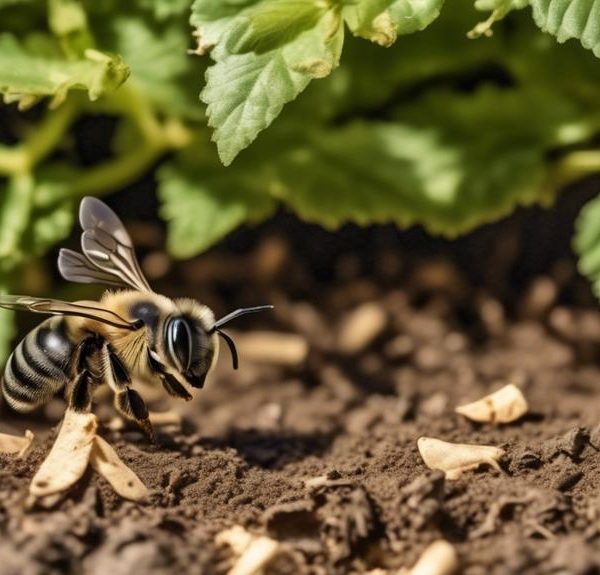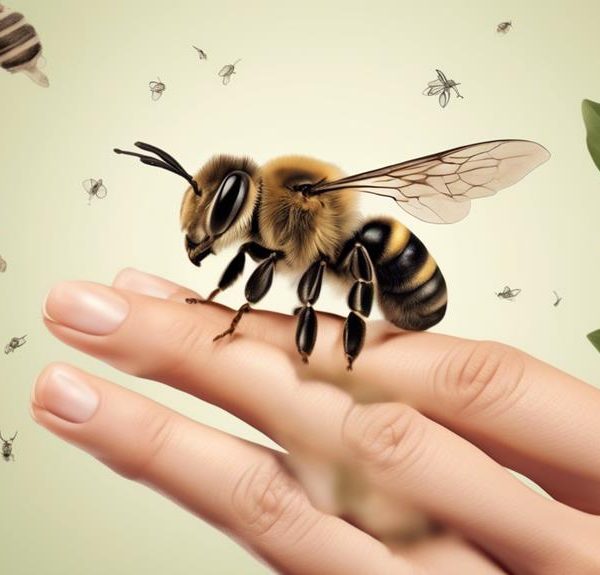Nest-building, nature-nurturing: navigate the nuanced life of the female leafcutter bee and unearth the secrets of these essential ecological enigmas.
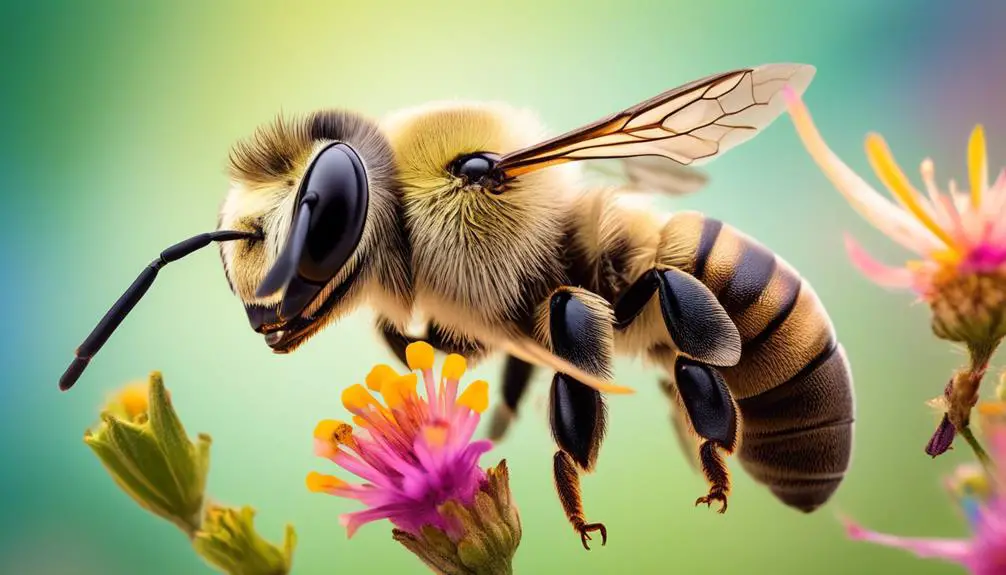
Female Leafcutter Bee
Imagine you're a knight, but instead of a dragon, your quest is to understand the remarkable world of the female leafcutter bee.
You've probably heard about these industrious insects, but there's much more to them than meets the eye. They're not just tiny creatures buzzing around your garden; they're crucial pollinators, vital to our ecosystem.
Curious about their distinctive behaviors, peculiar nesting habits, and the looming threats they face? Well, brace yourself for an intriguing journey into the life of the leafcutter bee, a journey that will leave you with a newfound appreciation for these miniature marvels.
Key Takeaways
- The female leafcutter bee goes through four stages of lifecycle: egg, larva, pupa, and adult.
- She lays her eggs in nest cells filled with pollen and nectar.
- The leafcutter bee nests in rotting wood or plant stems and constructs tube-like structures using leaf fragments.
- Leafcutter bees play a crucial role in pollination, transferring pollen grains from male anthers to female stigmas, and are essential for many plant species and the food supply.
Understanding the Leafcutter Bee's Lifecycle
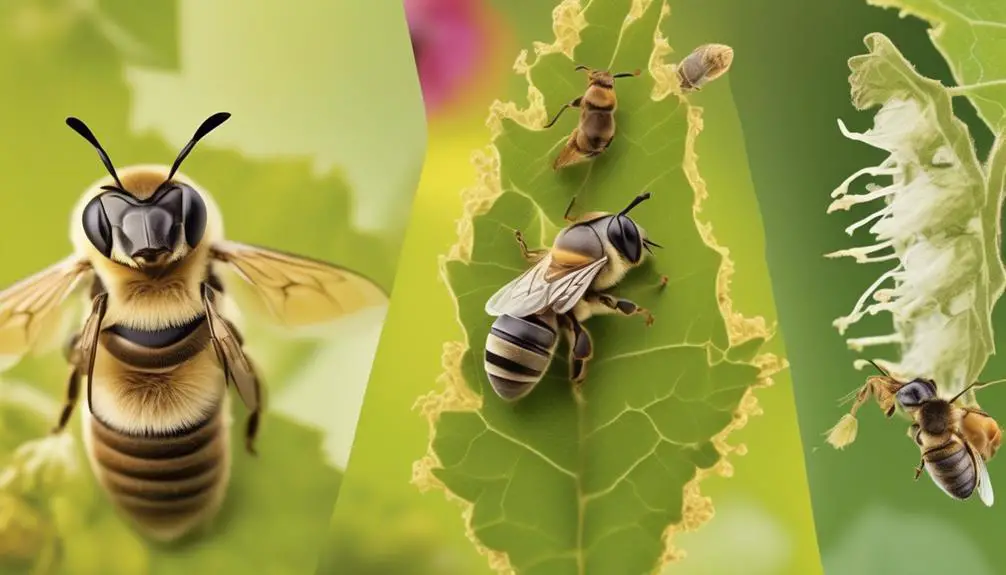
Let's delve into the intricate lifecycle of the leafcutter bee, a fascinating process that unfolds in four distinct stages: egg, larva, pupa, and adult. Each stage is a marvel of nature's design, showcasing incredible transformations.
In the egg stage, the female leafcutter bee lays her eggs in nest cells, each individually stocked with balls of pollen and nectar. This sustenance, meticulously gathered by the mother, ensures the larva's survival and growth.
Then, the larva emerges, beginning its life as a voracious eater. It consumes the food provided, growing rapidly. After a few weeks, it spins a cocoon around itself, signaling the start of the pupa stage.
The pupa phase is akin to a metamorphosis, where the bee undergoes significant changes. It develops legs, wings, and its distinctive mandibles. This period of transformation is vital for the bee's survival and ability to function as an adult.
Nesting Habits of the Leafcutter Bee

After emerging from the pupa stage, the adult leafcutter bee embarks on a unique nesting process, cutting out precise leaf fragments to construct its home. You may find it fascinating to watch these industrious creatures as they skillfully create their nests. They prefer nesting in rotting wood or plant stems, often reusing old tunnels dug by other insects.
The leafcutter bee does not randomly select leaves for her nest. She'll choose specific plants with thin leaves that are easier to cut and carry. Once she's cut the leaf fragment, she'll carry it back to her nest, layering them to create a tube-like structure.
To help you visualize, here's a table highlighting key aspects of her nesting habits:
Behavior | Details |
|---|---|
Nesting Location | Prefers rotting wood or plant stems |
Leaf Selection | Chooses specific plants with thin leaves |
Nest Construction | Layers leaf fragments to create tube-like structure |
Each leaf tube is filled with pollen and nectar, where she lays her eggs. The female leafcutter bee's meticulous effort ensures the survival of the next generation, making her an essential contributor to our ecosystem.
Leafcutter Bee and Its Pollination Role

While the nesting habits of the leafcutter bee are indeed intriguing, it's her role in pollination that truly underscores her importance in our ecosystem. As a super pollinator, she transfers pollen grains from the male anther of a flower to the female stigma, fostering plant reproduction.
Now, you might be wondering, 'What sets the leafcutter apart from other bees?' The answer lies in the way she collects pollen. Unlike honey bees that store pollen on their hind legs, leafcutters carry pollen on the hairs beneath their abdomen. This method exposes more pollen to flowers, increasing the chances of successful pollination.
Moreover, research indicates that leafcutters prefer different plant species compared to other bees, broadening biodiversity. They're particularly fond of legume family plants, which includes over 20,000 species.
Their influence doesn't stop there. It's estimated that around 30% of the human food supply and 90% of wild plants depend on pollinators like the leafcutter bee. Clearly, her role is crucial, not only for the survival of many plant species but also for our agriculture and food supply. Therefore, it's essential we continue supporting and protecting these industrious insects.
Threats and Conservation of Leafcutter Bees
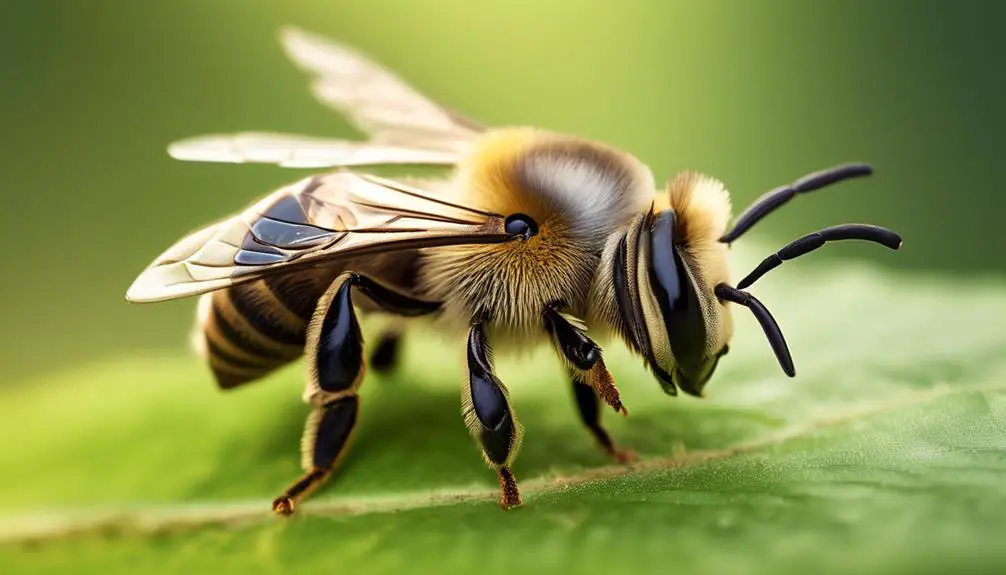
Despite their crucial role in pollination and biodiversity, leafcutter bees face numerous threats that could potentially impact their survival and, consequently, our ecosystems and food supply. Habitat loss, pesticide exposure, climate change, and the spread of parasites and diseases are among the primary threats these bees face.
Urbanization and agricultural development often result in the loss or degradation of natural habitats. These changes can eliminate nesting sites and food sources, thereby reducing leafcutter bee populations. Pesticides, particularly neonicotinoids, are toxic to bees and can lead to their decline. Climate change affects flowering time and plant distribution, disrupting the bees' food supply. Parasites and diseases, like the chalkbrood fungus, can also devastate leafcutter bee populations.
Conservation efforts focus on creating and preserving habitats, reducing pesticide use, and managing disease. You can contribute to these efforts by planting native flowers in your garden, providing nesting sites, and avoiding pesticide use. Research continues to explore more ways to protect and conserve these essential pollinators.
Interesting Facts About Leafcutter Bees
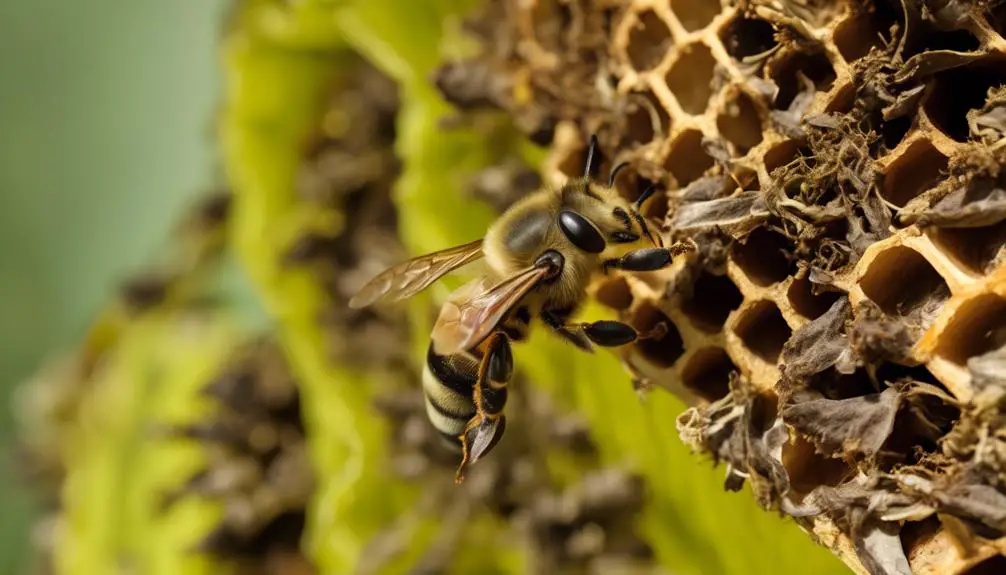
Now that we've explored the threats and conservation efforts associated with leafcutter bees, let's uncover some intriguing facts about these indispensable pollinators.
Did you know that there are about 1,500 species of leafcutter bees worldwide? They're solitary insects, meaning each female is fertile and builds her own nest without the help of worker bees.
Leafcutter bees have powerful jaws that cut circles out of leaves. They're not eating the foliage, but using it to construct nest cells. Inside each one, a female bee lays an egg and stocks it with pollen and nectar for the hatching larva to eat.
What's fascinating is that leafcutter bees are more effective pollinators than honeybees. They carry pollen on their abdomens, which brushes off easily as they move between flowers. This makes them vital for pollinating our crops and gardens.
Moreover, leafcutter bees are non-aggressive. They rarely sting unless threatened and their sting is less painful than a honeybee's. Understanding these facts can help us appreciate the vital role they play in our ecosystem and why it's crucial to protect them.
Conclusion
You've delved into the fascinating world of the female leafcutter bee. From understanding her lifecycle, nesting habits, to her crucial role in pollination. You've uncovered the threats she faces and the efforts in place for her conservation.
These industrious, solitary bees, with their intriguing leaf-cutting behavior, are a testament to nature's ingenuity. So, next time you spot a leaf with a perfect circle cut out, remember the vital pollinator at work.

